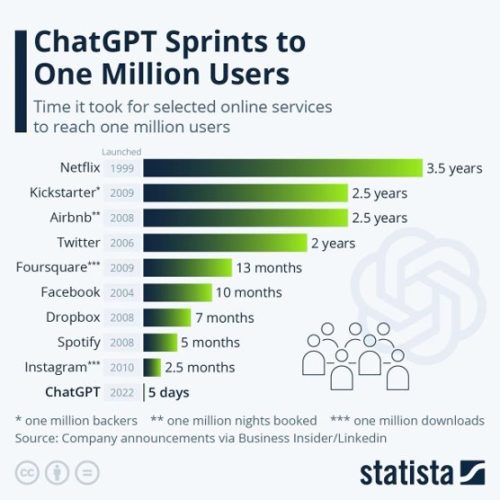By Gülbike Mirzaoğlu | Jun 1, 2023
Artificial intelligence (AI) is becoming increasingly important in our lives and has undergone some remarkable advancements. One of the earliest forms of AI is traditional AI, also known as conventional AI. It is capable of describing, predicting, and prescribing based on existing data. This has proven to be quite useful in a variety of areas, such as recognizing patterns, predicting client churn, forecasting product demand, providing next-best product recommendations, speech and image recognition, and natural language processing. In other words, traditional AI can analyze and understand patterns and data, and provide valuable insights and recommendations that can help businesses make better decisions.
What Are The Creative Possibilities of Generative AI?
Generative AI, on the other hand, is a type of AI that has become a game changer in its ability to generate new content. It is based on deep learning algorithms and uses neural networks to learn from large datasets, taking the creativity to the next level. Generative AI can create new images, audio, video, coding, 3D object generations, and even text that is indistinguishable from human-generated content. It is capable of generating numerous contents including but not limited to new music tracks, sound effects, code/dataset generations, content writings, solving exam questions, chatbots. Despite being in the early stages of development, the outputs generated by generative AI have already been incredibly impressive. For example, in 2018, a piece of artwork called “Portrait of Edmond de Belamy” was generated using an AI algorithm (Figure 1) and sold for $432,500. Similarly, in the same year, fashion brand Carlings introduced a “digital collection,” which consisted of clothing designs that were completely created using generative AI.

Figure 1: Portrait of Edmond de Belamy
Numerous companies and organizations offer generative AI solutions and services. Among the most renowned are OpenAI, which has created language models such as the GPT series, DALL-E 2, JukeBox, and Point-E. Microsoft provides VALL-E, RODIN Diffuson, GODIVA, and MoLer. IBM has the Watson AI platform, Google offers DeepDream and Magneta, while Amazon provides Lex and DeepComposer, and NVIDIA has MT-NLG, Edify, and MegaMolBART.
Meet ChatGPT: The Best AI Chatbot of 2022
Among many other models, ChatGPT has become the most popular and even considered the best AI chatbot ever since it became available to the public in November 2022. Within just in a week, it had attracted over a million users. To give you an idea of how impressive this is, reaching one million users took 3.5 years for Netflix, two years for Twitter, ten months for Facebook, and 2.5 months for Instagram (Figure 2).
ChatGPT is a large language model (LLM), which is a type of generative artificial intelligence model that is trained to understand and generate natural-sounding human language. It is based on the GPT (Generative Pre-trained Transformer), which is one of the most advanced deep learning architectures for natural language processing (NLP). Its highly advanced and sophisticated language model is capable of generating human-like responses to a wide range of questions and queries.
ChatGPT is a powerful tool that can understand questions and provide relevant and informative responses. It has been trained on a vast dataset of text, including books, articles, and websites, which gives it a broad range of knowledge and information to draw from. ChatGPT is versatile and can be used for various applications like virtual assistants, customer service chatbots, and educational tools. It can handle multiple languages and can be customized to specific domains and topics. Additionally, it is easily accessible as an API (Application Programming Interface), allowing developers and organizations to integrate it into their own applications and services. This has made it simpler for businesses and individuals to use ChatGPT to enhance their customer service, automate repetitive tasks, and provide personalized recommendations to users.

Figure 2: This chart shows the time it took for selected online services to reach one million users.
What Are The Risks and Challenges of Generative AI?
The use of Generative AIs has transformed the way we interact with and perceive AI. However, there are also significant risks associated with it that require continuous adaptation and change from AI developers, business users, investors, policymakers, and citizens. These risks include trust, security, and governance concerns such as data breaches, adversarial attacks, ethical considerations, deepfakes, data privacy, legal compliance, copyright issues, and cybersecurity problems. A comprehensive approach is necessary to address these risks, including a clearly defined strategy, good governance, and a commitment to responsible AI. Any organization that embraces generative AI must consider these issues with ethics in mind.
Impact of Generative AI on Business
It has become evident that the implementation of generative AI will have a significant impact on various business functions in the long run. However, in the initial stages, the greatest impact will be observed in areas such as information technology, marketing and sales, customer service, and product development. We also expect a significant impact on legal and risk. These functions will witness a remarkable transformation in terms of efficiency, accuracy, and productivity, expected to lead to a net positive impact on the overall business performance.
Generative AI is set to revolutionize various business functions in the foreseeable future. Initially, its greatest impact will be felt in key areas such as information technology, marketing and sales, customer service, and product development. As technology advances, we can expect to see it used more widely across various industries. These developments are expected to have a positive impact on overall business performance, ultimately driving growth, efficiency, accuracy, and success.
- Customer Service: Natural-sounding, automated, personalized chatbots, virtual assistants. With the help of AI, customer interactions can be more consistent and aligned with the desired tone and messaging. AI systems can provide knowledge bases and recommendations to human agents, enabling them to resolve customer issues faster and more effectively. This helps to enhance human agents’ capabilities rather than replacing them entirely.
- Marketing & Sales: Generative AI applications can be used for various tasks such as SEO optimization, creating ads, personalized messaging, detecting fraud, recommending new products, services, or offers. These applications can also generate content for customer outreach, including blog posts, social media posts, product descriptions, website copy, and more. It is anticipated that within two years, generative AI systems will assist in developing 30% of all outbound marketing messages.
- Information Technology: Artificial intelligence models that are designed to generate output have a vast array of uses within the realm of information technology. They are capable of creating codes, detecting and resolving bugs within existing codebases, addressing common IT problems that arise for both employees and end users, optimizing network performance, automating the setup and management of infrastructure, assisting with cybersecurity efforts, automating tasks that are repetitive in nature, and analyzing vast quantities of data to produce valuable insights and recommendations for IT systems. Automated coders currently available on the market have increased developer productivity by over 50%, which has contributed to the speedy progress of software development.
- Product Development: Generative AI is a useful tool for companies to come up with innovative product and feature ideas that may not have been considered by humans. By analyzing a vast collection of patents, generative AI can identify opportunities and risks related to intellectual property and new product features. It can also aid designers by producing design concepts, 3D models, color schemes, and materials that meet specific criteria, which accelerates the design process. Additionally, generative AI can facilitate faster prototype iteration for product designs.
What’s Next? Implications and Possibilities of the Limitless Potential of Generative AI
The potential of generative AI seems nearly limitless. Generative AI is a rapidly evolving technology that enables machines to produce creative works such as text, images, and audio that are almost indistinguishable from those created by humans. Prominent examples of this technology include DALL·E, GPT-3, and Stable Diffusion, which have demonstrated remarkable capacities for generating content on a massive scale. Given these developments, it is reasonable to wonder about the potential implications and possibilities for this transformative technology in the future.
As the technology behind Generative AI models continues to advance, their potential applications are becoming increasingly extensive and their outputs more human-like. These models have the potential to offer greater levels of personalization, collaboration, conversation, and interactivity. With the continued improvements in machine learning, goal-directed learning, perception, and planning, it is expected that AI will evolve from a generic tool to a truly autonomous intelligent agent. These agents will be able to perceive, comprehend, set objectives, and act independently, ushering in a new era of AI capability and functionality.